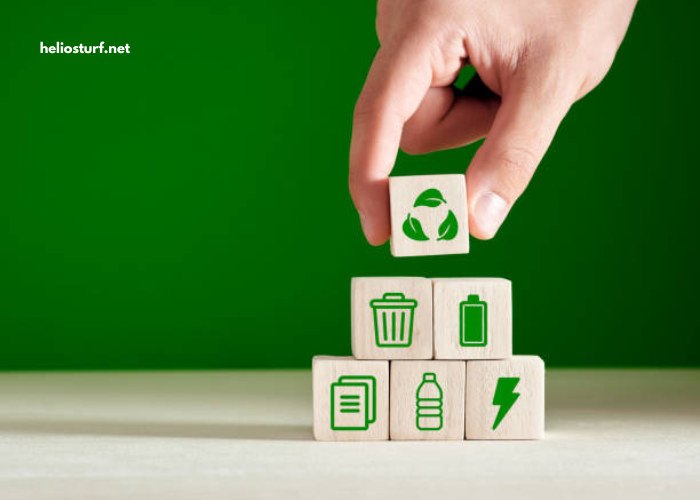
In today’s rapidly changing business environment, achieving growth is no longer just about expanding fast—it’s about growing smart. Sustainable business growth focuses on building a resilient and scalable company that not only delivers profitability but also contributes positively to people, communities, and the environment. This comprehensive, step-by-step guide will walk you through the essentials of sustainable business growth, helping you build a long-lasting and future-proof enterprise.
What Is Sustainable Business Growth?
Sustainable business growth refers to a strategic approach where companies expand operations, increase revenue, and scale effectively while maintaining environmental, social, and financial responsibility. It ensures that business development doesn’t come at the cost of depleting resources or compromising ethics.
Why Sustainable Growth Matters
-
Long-Term Stability: Businesses that grow sustainably are better equipped to navigate economic fluctuations and industry disruptions.
-
Brand Trust & Reputation: Sustainability practices enhance brand credibility and customer loyalty.
-
Investment Appeal: Investors and stakeholders are increasingly looking for companies with strong ESG (Environmental, Social, and Governance) practices.
-
Regulatory Compliance: Proactive sustainability reduces legal risks and aligns with evolving governmental regulations.
Step 1: Define a Clear Vision and Mission
Start With the Big Picture
Every successful growth journey begins with a well-defined vision and mission. These act as the compass guiding your decisions, strategies, and operations.
-
Vision Statement: Describe what your business aspires to become in the future.
-
Mission Statement: Define the purpose of your business, including your goals, values, and commitment to sustainability.
Align Core Values
Ensure that your organizational values align with sustainable principles such as ethical sourcing, carbon reduction, and employee well-being.
Step 2: Conduct a Thorough Market and SWOT Analysis
Understanding where your business stands in the market and what forces affect your industry is critical for informed decision-making.
Perform Market Research
-
Identify customer needs, market trends, and competitive dynamics.
-
Use tools like Google Trends, Statista, and industry reports for actionable insights.
SWOT Analysis
Evaluate your internal strengths and weaknesses alongside external opportunities and threats.
| Strengths | Weaknesses |
|---|---|
| Strong brand | Limited resources |
| Unique product | Low online visibility |
| Opportunities | Threats |
|---|---|
| Rising demand for green products | New competitors |
This analysis sets the foundation for building realistic and achievable growth strategies.
Step 3: Build a Scalable and Resilient Business Model
Sustainable growth depends on a business model that can scale without compromising quality, values, or efficiency.
Key Elements of a Sustainable Business Model
-
Diversified Revenue Streams: Reduce dependence on a single product or market.
-
Cost-Efficiency: Implement lean operations to optimize resources.
-
Technology Integration: Leverage automation, AI, and cloud systems to improve productivity.
-
Eco-friendly Practices: Use renewable energy, reduce waste, and optimize supply chains.
Step 4: Develop a Strategic Growth Plan
Set SMART Goals
-
Specific: Define what you want to achieve.
-
Measurable: Use metrics like sales, user growth, and carbon offset.
-
Achievable: Set realistic targets based on your current capacity.
-
Relevant: Ensure alignment with long-term goals.
-
Time-bound: Create deadlines to maintain accountability.
Growth Strategy Types
-
Market Penetration: Increase market share with existing products.
-
Market Development: Enter new geographical or demographic markets.
-
Product Diversification: Develop new offerings for existing customers.
-
Partnerships & Mergers: Collaborate with like-minded organizations for mutual growth.
Step 5: Invest in People and Culture
Your team is the backbone of your sustainable growth journey. Investing in people leads to innovation, motivation, and long-term success.
Focus on Employee Development
-
Provide regular training and learning opportunities.
-
Offer career advancement programs.
-
Encourage cross-functional collaboration.
Build a Purpose-Driven Culture
Create a culture where sustainability is not just a buzzword but a way of doing business.
-
Foster transparency and inclusivity.
-
Reward sustainable initiatives.
-
Engage employees in CSR activities.
Step 6: Leverage Technology and Data
Data-driven businesses make better decisions. Harness technology to track performance, forecast trends, and reduce operational inefficiencies.
Useful Tools for Business Growth
-
CRM Systems (e.g., Salesforce): Improve customer relationships.
-
ERP Solutions (e.g., SAP): Streamline operations.
-
Analytics Platforms (e.g., Google Analytics): Monitor user behavior and sales data.
-
Sustainability Software (e.g., Sphera, EcoChain): Track ESG metrics.
Step 7: Optimize Customer Experience (CX)
Happy customers are loyal customers. A consistent and positive customer experience fuels referrals, retention, and revenue.
Ways to Enhance CX
-
Offer multichannel support (chat, email, phone).
-
Personalize product recommendations using AI.
-
Gather feedback and adapt based on customer insights.
-
Ensure ethical and sustainable product sourcing.
Step 8: Ensure Financial Sustainability
Financial stability is the lifeblood of sustainable business growth. Growth should never come at the cost of bankruptcy or cash flow issues.
Financial Best Practices
-
Create monthly, quarterly, and annual budgets.
-
Monitor key metrics: gross margin, net profit, ROI, customer acquisition cost.
-
Seek funding options aligned with sustainability (e.g., green bonds, ESG investors).
-
Build an emergency reserve for unforeseen risks.
Step 9: Build Strategic Partnerships
Collaborations can provide access to new markets, technologies, and skills.
Types of Partnerships to Explore
-
Joint Ventures: Share resources for mutual growth.
-
Supply Chain Partnerships: Work with ethical and local suppliers.
-
Academic Collaborations: Leverage research institutions for R&D.
-
Non-profit Organizations: Co-create social impact initiatives.
Step 10: Monitor, Measure, and Improve
Sustainable growth is a continuous process. Regular evaluation ensures that your strategies remain relevant and effective.
Key Performance Indicators (KPIs)
| Area | KPIs |
|---|---|
| Financial | Revenue growth, profit margins, CAC |
| Operational | Supply chain efficiency, energy usage |
| Environmental | Carbon footprint, water consumption |
| Social | Employee retention, community impact |
Continuous Improvement
-
Use Agile methodologies to adapt quickly.
-
Conduct quarterly reviews.
-
Embrace customer feedback and pivot when needed.
Step 11: Communicate Your Sustainability Efforts
Transparency builds trust. Share your sustainability journey with stakeholders, customers, and the public.
Communication Channels
-
Website: Create a dedicated sustainability page.
-
Annual Reports: Include ESG performance metrics.
-
Social Media: Post updates about sustainable milestones.
-
PR Campaigns: Showcase your impact stories.
Step 12: Stay Compliant and Future-Ready
Global sustainability standards are evolving. Keep your business ahead of regulatory and market changes.
Compliance Areas
-
Environmental laws and certifications (e.g., ISO 14001).
-
Labor rights and diversity regulations.
-
Data privacy and cybersecurity laws.
Future-Proofing Your Business
-
Embrace circular economy principles.
-
Prepare for climate-related risks.
-
Innovate with sustainable materials and processes.
Real-World Example: Patagonia’s Sustainable Growth
Patagonia, the outdoor apparel brand, is a benchmark for sustainable business growth. Their strategy includes:
-
100% transparency in sourcing and manufacturing.
-
Investing in environmental activism.
-
Encouraging customers to buy less and repair more.
-
Strong employee benefits and social justice advocacy.
Their approach has led to loyal customer bases, high brand equity, and steady, ethical growth.
Final Thoughts: Sustainable Growth Is Smart Growth
Sustainable business growth isn’t just about going green—it’s about creating a resilient, adaptive, and ethically strong business that thrives in a complex world. By following this step-by-step guide, entrepreneurs and business leaders can craft strategies that are not only profitable but also responsible.
Growth that’s conscious and strategic ensures you’re not just building a business—you’re shaping a better future.
Frequently Asked Questions (FAQs)
Q1. How can small businesses grow sustainably?
Small businesses can start with minor changes like sourcing locally, reducing waste, going digital, and involving employees in decision-making.
Q2. What industries benefit most from sustainable growth strategies?
Industries like manufacturing, retail, fashion, food & beverages, and tech are actively integrating sustainable practices due to consumer and regulatory pressure.
Q3. Can fast growth be sustainable?
Yes, but only if it’s backed by scalable systems, strong financial management, and a values-driven approach.
Q4. What is ESG and why is it important?
ESG stands for Environmental, Social, and Governance—three pillars of sustainable investing and responsible business conduct.




